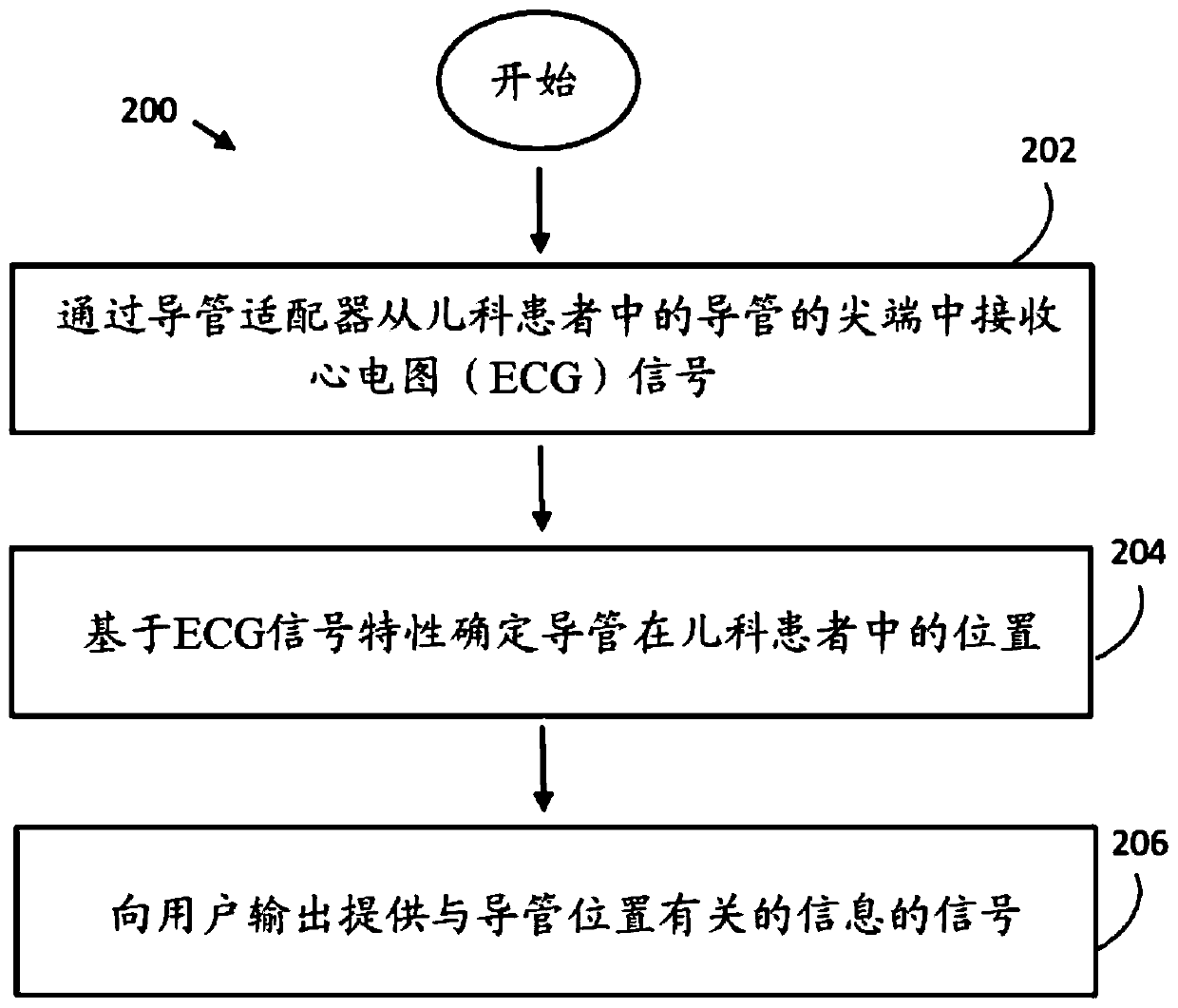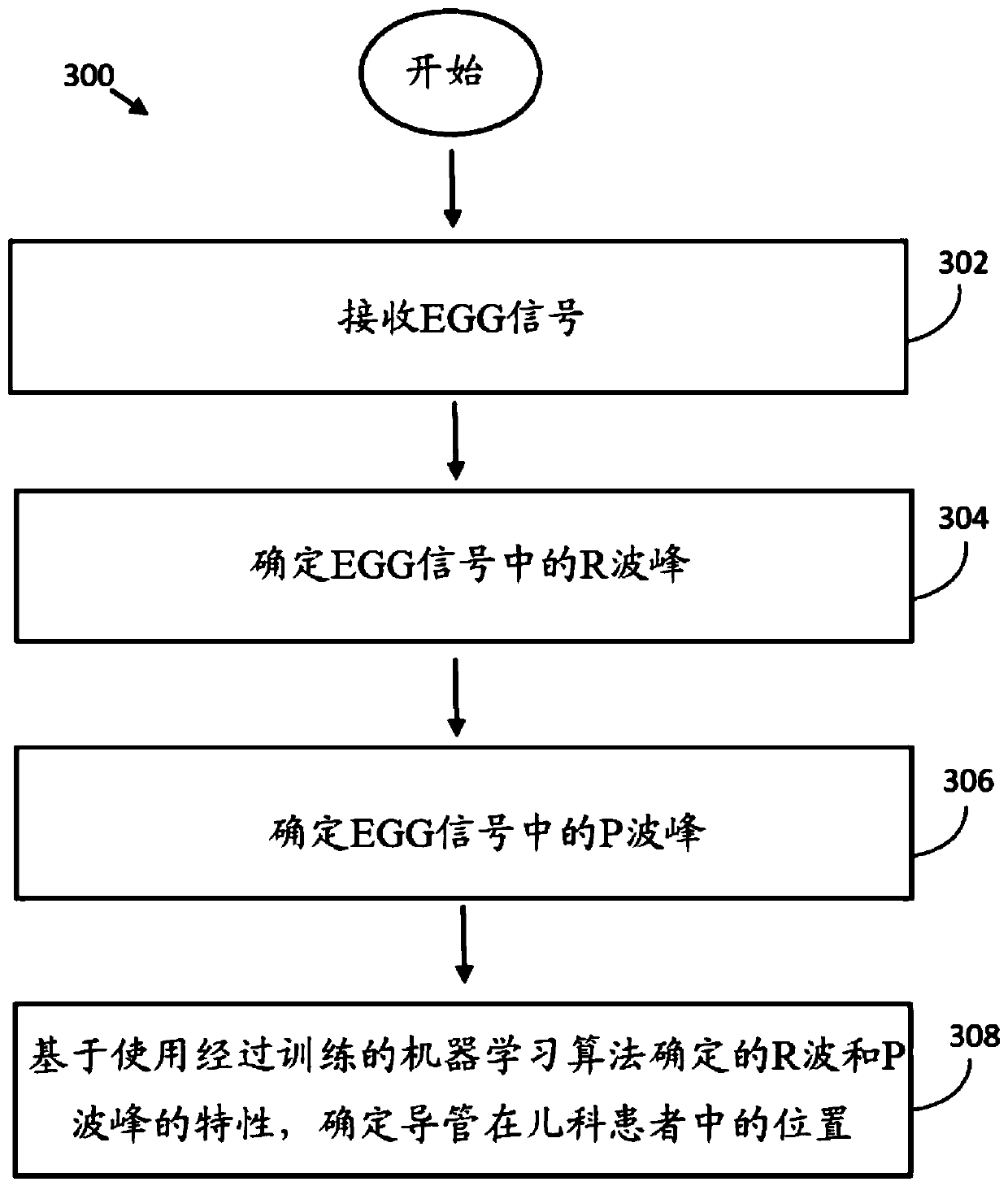Catheter location determination in paediatric patients
A patient and pediatric technology, used in catheters, connecting tubes, medical science, etc., to solve problems such as incorrect placement of catheters, misplacement of catheter tips, and physical damage to internal organs of catheters
- Summary
- Abstract
- Description
- Claims
- Application Information
AI Technical Summary
Problems solved by technology
Method used
Image
Examples
Embodiment Construction
[0053] Aspects of the present disclosure provide a system and method for receiving an electrocardiogram (ECG) signal from the tip of a catheter inserted in a pediatric patient, determining R-peaks in the ECG signal, determining P-peaks in the ECG, and using a trained machine A learning engine determines a position of the catheter in the pediatric patient based at least in part on the P-peak and the R-peak.
[0054] The heart's sinoatrial node generates electrical signals that extend through the body. An electrocardiogram (ECG) signal is a measurement of these electrical signals from the heart. EGG can be measured at various locations in the human body. In pediatric patients, such as neonates, infants, young children, children or adolescents. In smaller patients, such as newborns to young children, the distance from the heart to any other part of the body is small compared to the same distance in adults. Therefore, ECG signals can be easily detected across the patient's enti...
PUM
 Login to View More
Login to View More Abstract
Description
Claims
Application Information
 Login to View More
Login to View More - R&D
- Intellectual Property
- Life Sciences
- Materials
- Tech Scout
- Unparalleled Data Quality
- Higher Quality Content
- 60% Fewer Hallucinations
Browse by: Latest US Patents, China's latest patents, Technical Efficacy Thesaurus, Application Domain, Technology Topic, Popular Technical Reports.
© 2025 PatSnap. All rights reserved.Legal|Privacy policy|Modern Slavery Act Transparency Statement|Sitemap|About US| Contact US: help@patsnap.com



